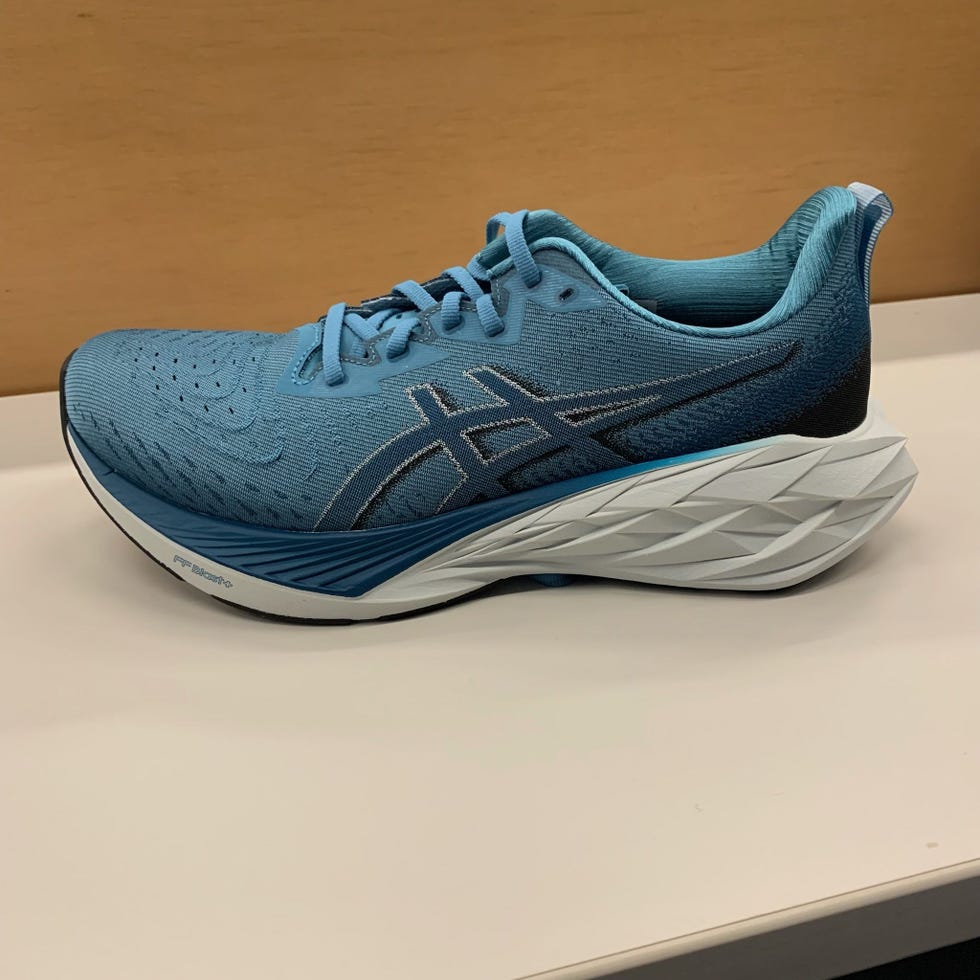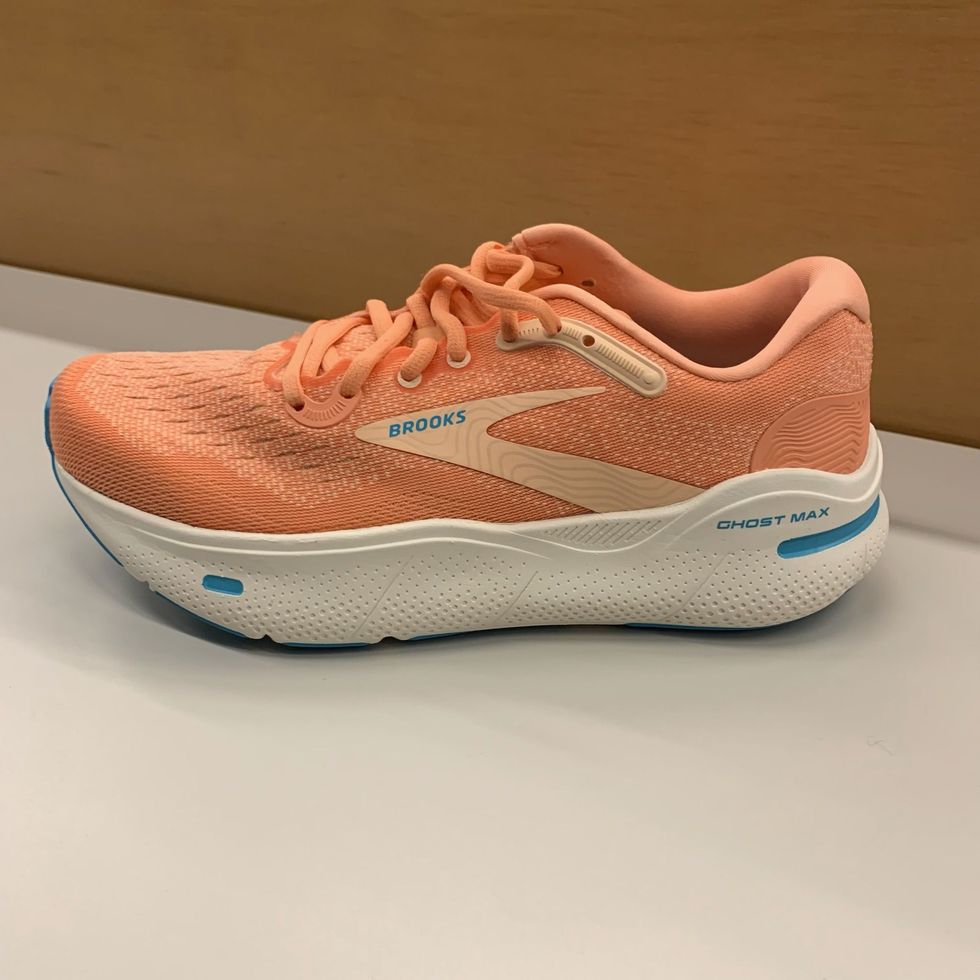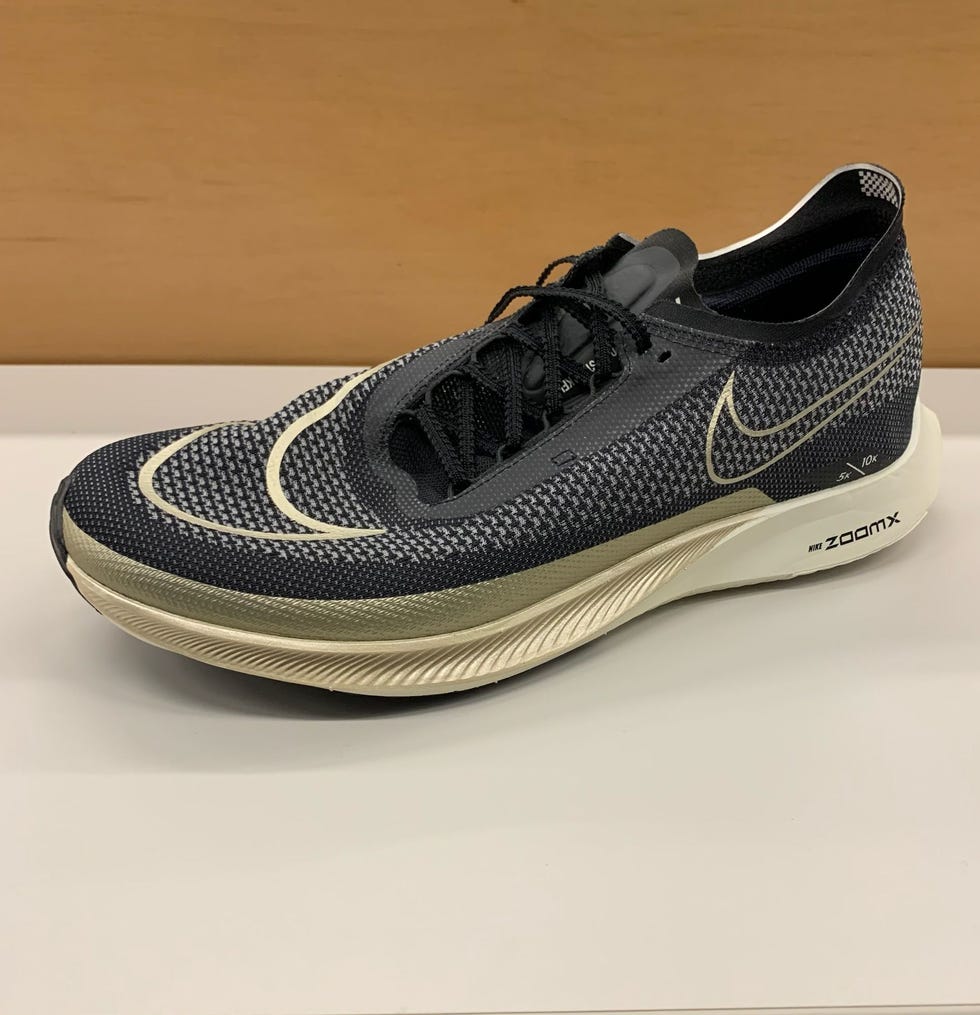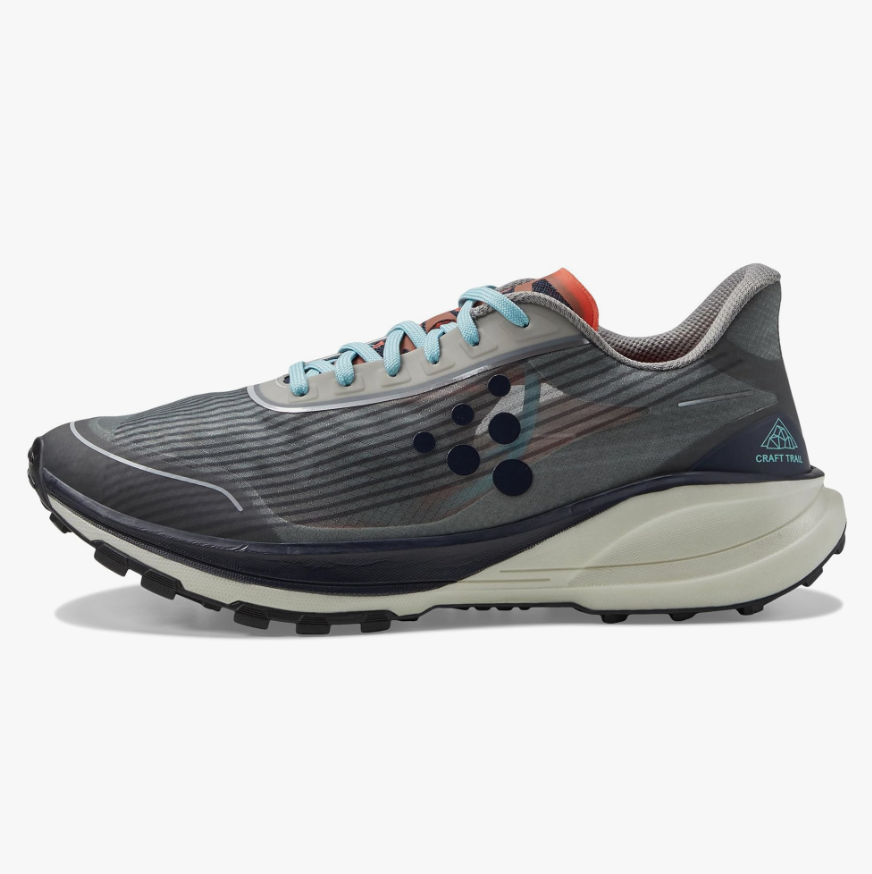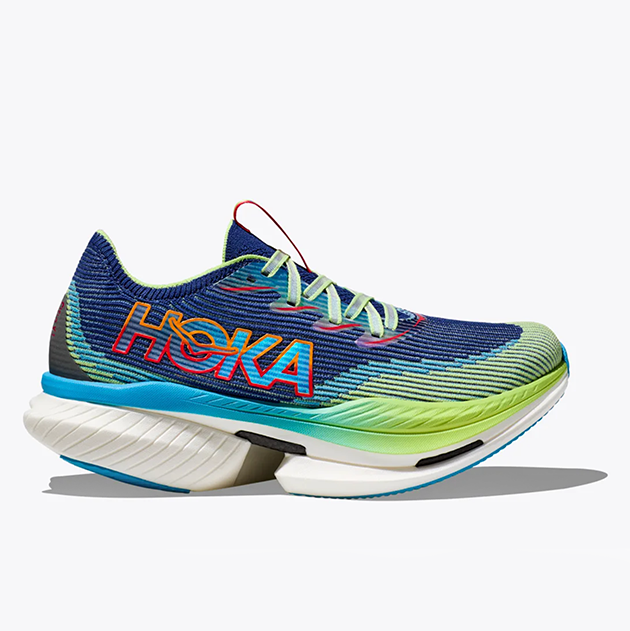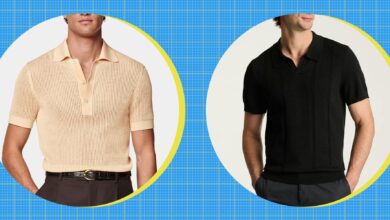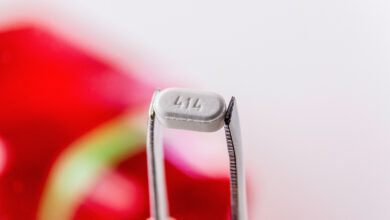11 Best Running Shoes for Men in 2024, Tested by Fitness Editors
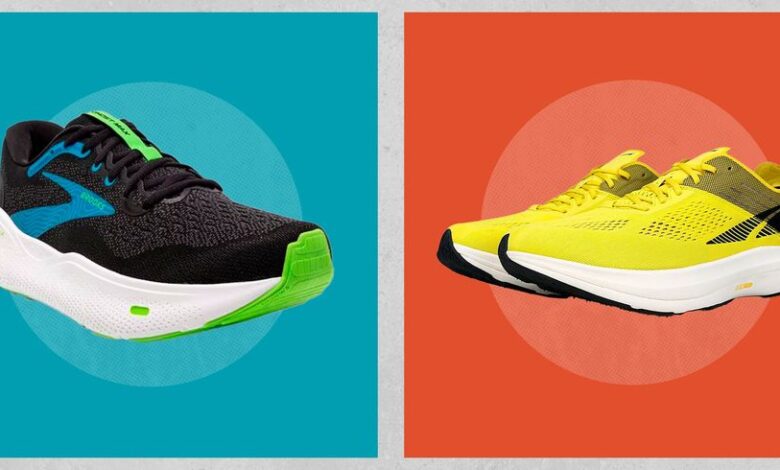
Pros
- A LOT of cushioning
- Great for easy miles
- Reasonably priced
Cons
- Lacks grip in wet conditions
- Too heavy for speed work
The Novablast is a staple shoe that you might find in a lot of runners’ closets. It’s nice and roomy with a wider feel, making for an incredibly comfy training shoe that works well for a variety of distances and training styles. I love how well cushioned this shoe is, which makes it a great option for me when I take on easy effort miles or recovery runs, but can also carry me through longer runs.
These shoes utilize cloud-like soft foam cushioning, which delivers a bouncy feel that most runners love. Compared to previous iterations, there is a more pronounced curved or rounded shape in the sole of the shoe (also referred to as a ‘rocker’ or ‘meta rocker’), which facilitates a smoother and more natural rolling motion from the heel to the toe during each step.
Read more: Best Running Shoes for Beginners
| Best for | Everyday runs, recovery runs |
|---|---|
| Upper | Woven textile |
| Midsole | FF BLAST™ PLUS ECO |
| Weight | 9.2 oz |
| Heel drop | 8 mm |
Pros
- Pillowy, soft upper
- Excellent cushioning
- Wide, stable base
Cons
- It feels a little heavy
The Brooks Ghost Max, boasting a substantial stack of pillowy foam cushioning, a curved, meta rocker outsole, and a plush mesh upper, shines in its design and performance. While Brooks is mostly known for its stability and neutral runners, this highly cushioned trainer is my new favorite in the lineup.
Ideal for those with wider feet, the plush upper, generously padded around the collar and tongue, delivers a comfortable step-in feel. The midsole feels light without being too soft, and offers a smooth transition from landing to toe-off, which is further enhanced by a wide base for added stability.
The shoe looks and feels super cushioned and plush, however, it felt heavier on my foot than expected when running. Despite its 10 oz weight, the shoe feels great for easy recovery runs up to 5k pace on the treadmill or road.
Read more: Best Cushioned Running Shoes
| Best for | Everyday running, recovery/easy runs |
|---|---|
| Upper | Plush mesh |
| Midsole | DNA Loft v2 foam |
| Weight | 10 oz |
| Heel drop | 6 mm |
Best Running Shoe for Race Training
adidas Adizero Boston 12
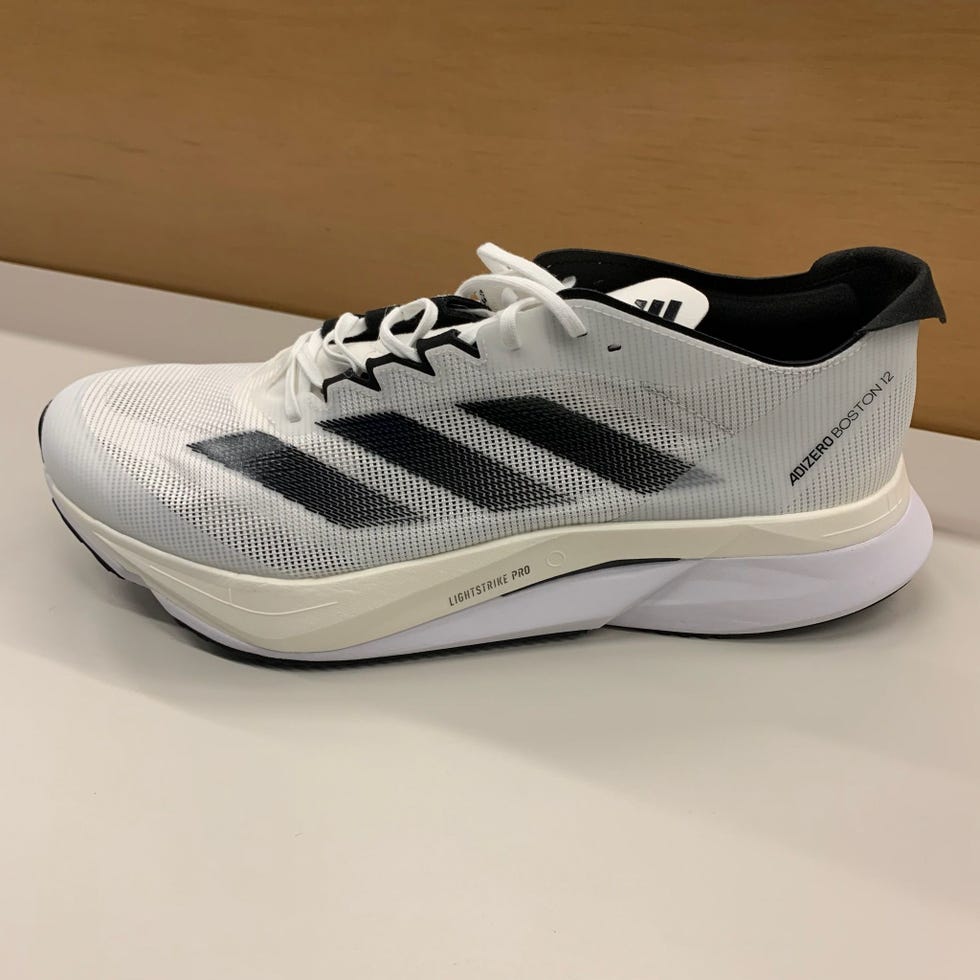
Best Running Shoe for Race Training
adidas Adizero Boston 12
Pros
- Versatile for various distances
- Great grip
- Good stability
Cons
- Relatively narrow
- Some heel slippage
The Adizero Boston series is a great race training shoe that hits all the marks for most runners. I found these shoes to be incredibly versatile; they don’t do one specific thing perfectly, but do a decent job at everything. A Jack-of-all-trades kind of shoe that would make a great training shoe for most people.
It features a snug midfoot that gives a locked-down feeling I love for hitting faster paces on training runs. The brand’s midsole technology is designed to improved support and stability through the foot without limiting movement, a promise I feel it delivers on.
If you find yourself casually hitting some miles here and there or want to sign up for a few local races in the future, I can see these being a great bang-for-your-buck buy. My only issue with this shoe is that you may find some heel slippage with it, but it’s nothing a runner’s knot can’t mitigate.
Read more: Best Adidas Shoes You Should Know
| Best for | Everyday running, tempo runs |
|---|---|
| Upper | Mesh |
| Midsole | Lightstrike Pro |
| Weight | 9.2 oz |
| Heel drop | 7 mm |
Advertisement – Continue Reading Below
Best High-Stack Running Shoe
New Balance FuelCell SuperComp Trainer v2
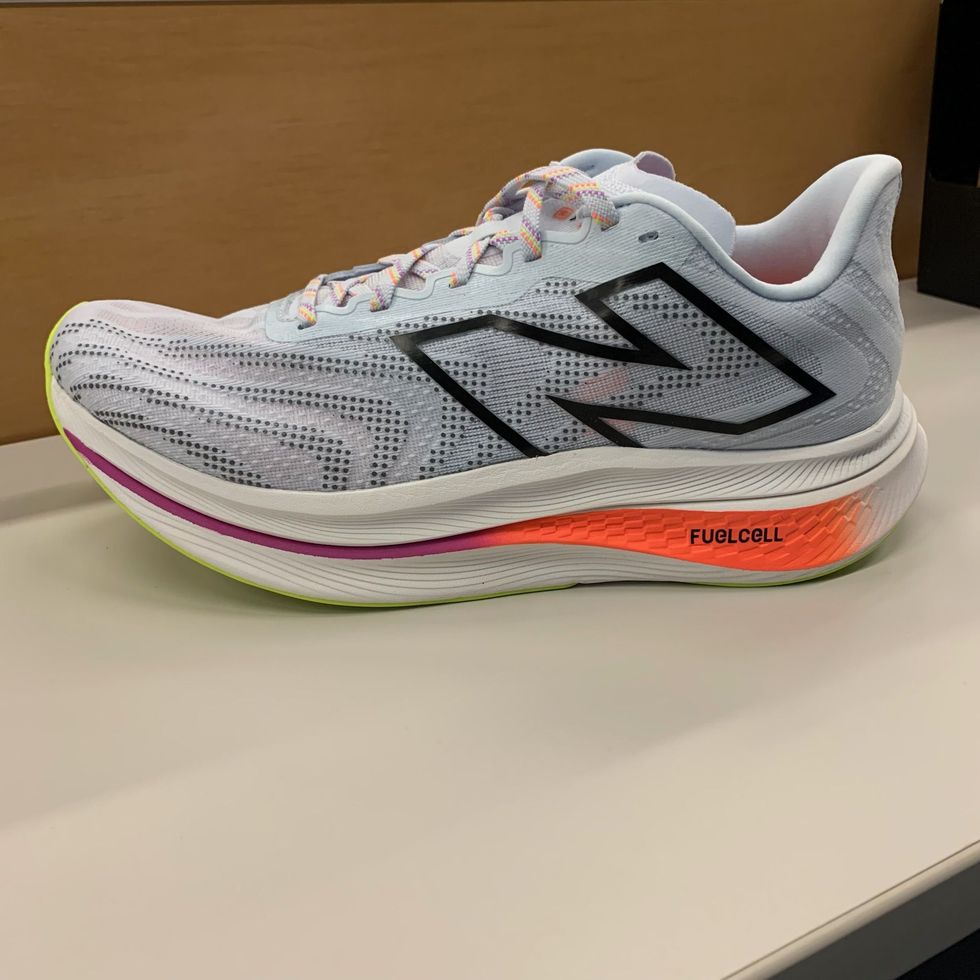
Best High-Stack Running Shoe
New Balance FuelCell SuperComp Trainer v2
Pros
- Carbon plate delivers great energy return
- Available in wide sizes
- Solid stability
- Roomy toebox
Cons
- Not an everyday training shoe
This shoe has an insanely cushioned 47 mm stacked midsole with a cambered carbon plate and a void down the center to optimize energy return. It’s the epitome of a high stack trainer, meant for long runs and race training of any distance. We found this shoe also offers surprisingly great stability, with a wider heel that’s designed to help combat pronation (your feet rolling inward).
The lace knit upper allows for some stretch but still gives a snug, locked down feel. In the wide version, the upper felt a bit more generous through the midfoot and toebox.
We found the midsole foam to be ideally soft yet incredibly responsive—the energy return is stellar and is everything you want from a high-stack trainer. The shoe’s durable construction and stability allows it to perform well for long distances, too.
Read more: Best New Balance Shoes
| Best for | Long distance running, racing |
|---|---|
| Upper | Flat knit |
| Midsole | FuelCell foam |
| Weight | 10 oz. |
| Drop | 6 mm |
Pros
- Promotes a smooth, natural stride
- Incredibly lightweight
- Super breathable
- Upper provides solid lockdown
Cons
- Not the most durable shoe in the long-term
Weighing in at 6 ounces, the Streakfly is one of the lightest road running shoes out there right now. And the featherlight experience is definitely the main pull to this fun shoe.
We found its flexibility and barefoot-feel made each stride feel smooth and easy. It’s designed with racing in mind, yet delivers a surprisingly soft ride, making it feel more like a trainer than a traditional racing shoe.
While it excels in delivering a smooth and comfortable experience, it’s worth noting that it may not offer the same speed as carbon fiber shoes and may lack durability for regular training. However, at $160, it remains a relatively affordable option for those seeking a lightweight racing shoe.
| Best for | Races under 10k |
|---|---|
| Upper | Ultra-thin knit |
| Midsole | ZoomX |
| Weight | 6.5 oz |
| Heel drop | 6 mm |
Pros
- Durable, protective rubber outsole
- Grippy even in slick conditions
- Upper offers a great balance of lockdown and flexibility
We took this all-surface runner to the trail and weren’t disappointed. Foam cushioning provides a light feel and plenty of energy return underfoot when you’re moving fast, while an ultra-grippy, lugged rubber outsole helps prevent slipping on wet trails. We also like the thick, protective plate to keep rocks from puncturing the sole.
Light, responsive, and tough, what more could you ask for out of a trail running shoe? No matter the terrain, we found the durable mesh upper kept debris out and a comfortable, contoured insole kept our feet supported and feeling good.
Read more: Best Trail Running Shoes for Men
| Best for | Trail running, hiking |
|---|---|
| Upper | Mesh |
| Midsole | Cr Foam™ |
| Weight | 11.3 oz |
| Heel drop | 6 mm |
Advertisement – Continue Reading Below
Best Running Shoe for Daily Training
Hoka Clifton 9

Best Running Shoe for Daily Training
Hoka Clifton 9
Pros
- Great for casual and serious runners alike
- Reasonable price
- Balanced, responsive cushioning
- Really durable
- Tons of colors available
Cons
- Speed runners might consider upgrading Hoka models
Hoka’s latest Clifton shoe release is the ninth version of the popular and MH award-winning franchise. This iteration is even lighter and provides more cushioning than previous models, meaning it’s ideal for more serious runners. The ultralight-yet-cushioned design was achieved by reducing the weight of the shoe, while increasing the stack height of cushioning by 3 mm.
Running in the Hoka Clifton 9 ourselves, we found that its comfort and response is better than its previous version. That’s because of the updated midsole, additional cushioning, and trimming of unnecessary overlays and other features from the shoe’s upper to decrease weight and improve flexibility. We also like the new reflective heel panel, which adds an element of visibility for nighttime runs.
“I come back to the Clifton every year because it’s such a solid shoe. The 9 is a great example of this: It’s cushioned, but not overly soft; it feels snappy off the road, but it’s not an overpowering energy return for an everyday running shoe,” says Brett Williams, NASM, MH Senior Fitness Editor.
Read more: Hoka Clifton vs. Bondi Review
| Best for | Everyday run, walking |
|---|---|
| Upper | Knit |
| Midsole | EVA foam |
| Weight | 8.70 oz |
| Heel drop | 5 mm |
Best Running Shoe for Easy Miles
Nike Invincible 3
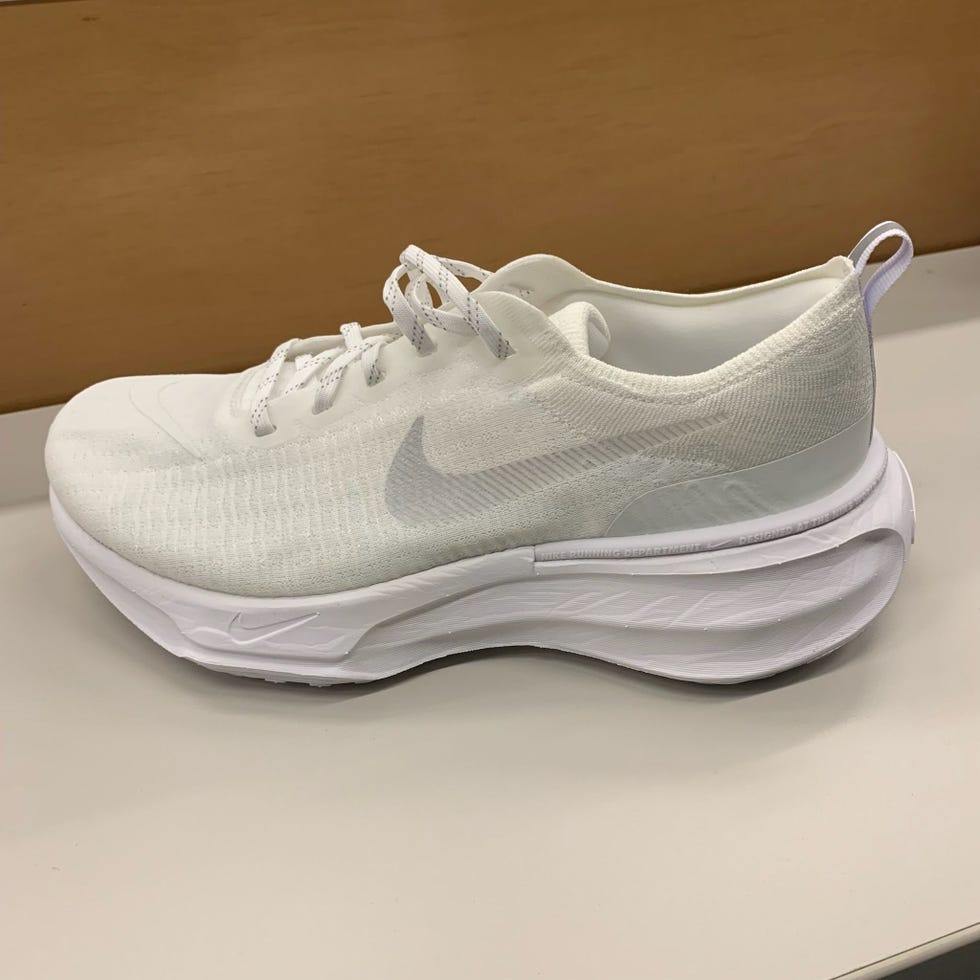
Best Running Shoe for Easy Miles
Nike Invincible 3
Pros
- Responsive
- Ergonomic shape makes for smooth heel-to-toe transitions
- Maximum cushioning
Cons
- May feel heavy for speed runners
The combination of a spacious forefoot, plush foam cushioning crafted from the brand’s most responsive midsole material, and a wide stable base make this shoe a go-to option for weekly easy mileage. The meta rocker design promotes smooth heel-to-toe transitions, which can be particularly beneficial for runners who tend to strike with their heels.
This is one of Williams’ favorite shoes to run in, hands down. “The key is the foam, which is super bouncy and responsive—and the makeover from the first two iterations of the model actually make it look good off the road, too.”
Read more: Best Nike Shoes
| Best for | Easy runs, road running |
|---|---|
| Upper | Flyknit |
| Midsole | ZoomX |
| Weight | 10.9 oz |
| Heel drop | 9 mm |
Best Running Shoe for Flat Feet
Brooks Adrenaline GTS 23
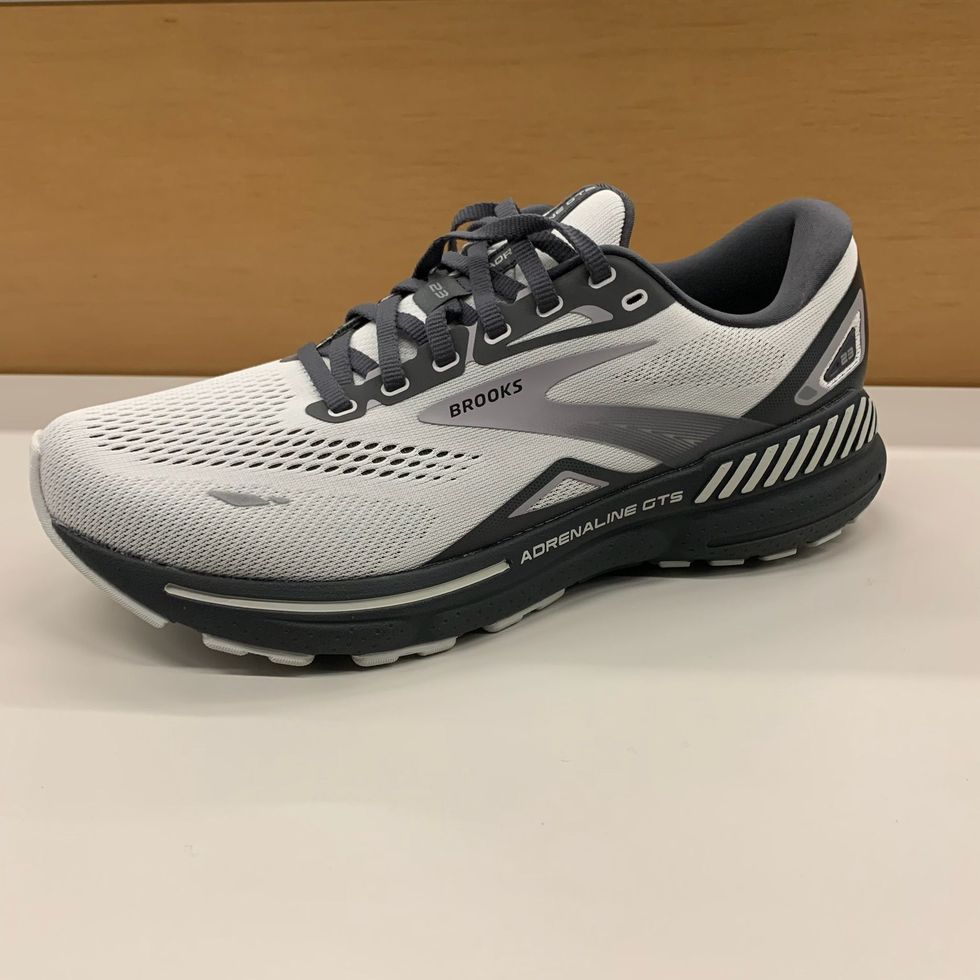
Best Running Shoe for Flat Feet
Brooks Adrenaline GTS 23
Pros
- Adequate support and cushioning
- Smooth ride
- Durable
Cons
- Not ideal for high arches
The latest version of the Brooks Adrenaline is one of the more versatile stability running shoes on the market. When taking on easy runs, long runs, or nearly anything in between, we found this shoe provided adequate cushioning, solid support, and a dependable fit for those with low arches.
The midsole: Made with cushioning comprised of foam, rubber, and air, it feels plush and absorbs shock and pads landings well. It’s a good midrange shoe if you need stability with cushioning, and don’t like a high stack metarocker.
The upper is mesh and breathable, which contributes to its flexibility and lightweight build. Reflective strips offer increased visibility for early morning or late afternoon runs.
It’s not the lightest, fastest, or most cushioned shoe on this list, but it is one of the most supportive, balanced, and stable for those requiring additional motion control.
Read more: Brooks Hyperion Elite Review
| Best for | Everyday runs, walking |
|---|---|
| Upper | Engineered spacer mesh |
| Midsole | EVA blend foam |
| Weight | 10.1 oz |
| Heel drop | 12 mm |
Advertisement – Continue Reading Below
Best Running Shoe for Long Distances
Altra Vanish Carbon

Best Running Shoe for Long Distances
Altra Vanish Carbon
Pros
- Secure fit
- Carbitex provides extra boost and propulsion
- Incredibly lightweight
Cons
- Over $200
- May be too narrow for some foot anatomies
Once we experienced the Vanish Carbon’s square toe bed, which mimics the natural shape of the human foot, (otherwise known as Footshape™, the brand’s claim to fame), other shoes we tested felt relatively crammed. This design allows your foot to rest and move naturally, even when your feet start to swell during long runs. But that’s only partially why we’re giving it so much love.
It’s also made with a highly-specialized carbon plate that naturally flexes with your foot to provide boost and propulsion. We like how the balanced, zero-drop cushioning platform positions the heel and forefoot to encourage proper alignment and form, even when fatigue starts setting in. If a roomy toebox, overall comfort, and distance are your goals, this shoe from Altra is a solid recipe.
Read more: Best Running Shoes to Prevent Shin Splints
| Best for | Long distance runs, races |
|---|---|
| Upper | Engineered Mesh |
| Midsole | Altra EGO™ PRO |
| Weight | 7.3 oz |
| Heel drop | 0 mm |
Pros
- Curved outsole propels you forward
- Carbon-plated for snappy energy return
- Plenty of cushioning
Cons
- Limited colorways
- More than $250
The new Cielo X1 follows the Rocket X2 in Hoka‘s race day shoe offerings. Similar to the Rocket X2, the Cielo X1 is designed for race running spanning 10k to marathon distances, and is Hoka’s most responsive racer yet, according to Brett Williams, NASM, MH Senior Fitness Editor, who had the opportunity to test the Cielo X1 pre-launch.
“This shoe puts Hoka in the conversation for one of the better carbon plate options available,” he says. Although he hasn’t raced long distances in them yet, Williams’ tempo training and long runs have felt energized by the light, speedy kicks.
The minimalist knit upper and collar offer a secure yet breathable feel, and the metarocker shape, winged carbon fiber plate, and 39 mm of bouncy foam cushioning contribute to a swift stride cycle. That said, the Cielo X1 is slightly heavier than the Rocket X2 (by about an ounce), which hasn’t been an issue for Williams’ runs up to 10 miles—but it’s something he’ll keep in mind when ramping up closer to half marathon or marathon distance.
The Cielo X1 is a well-rounded, exciting addition to Hoka’s budding collection of super shoes. If you’re gearing up for races of 10k or longer this year, the Cielo X1 could be a valuable addition to your lineup.
Read more: Best Hoka Running Shoes
| Best for | Races 10k or longer |
|---|---|
| Upper | Knit |
| Midsole | PEBA foam |
| Weight | 9.3 oz |
| Heel drop | 7 mm |
How to Choose the Best Running Shoes (for You)

We consulted with Mark J. Mendeszoon, DPM, FACFAS, a podiatrist at Precision Orthopaedic Specialties in Ohio, to answer one of the most commonly asked questions about running footwear: How to choose the right pair. Here’s what we came up with:
Foot type: The most important factor to consider when purchasing a pair of running shoes is that you are fitted in the proper functioning shoe for your foot type. There are several categories of shoes including wide, neutral, support etc. To find the best shoe for your foot type and condition, it’s important to identify your arch support and width needs. This can be done through measurement, consult with a virtual professional through a footwear brand site, or by ordering from a company with free shipping and returns.
Size: A well-fitting pair of running shoes should fit snugly but not be too tight. There should be about a thumb’s width of space between your longest toe and the end of the shoe. Check the width, too. Make sure the shoe is wide enough to accommodate your foot without being too loose or too tight, especially in the toe box and midfoot.
Running style: Think about whether you tend to land on the balls of your feet or your heels when you run. Different shoes are designed for different types of runners, so understanding your running style can help you choose a shoe that will best suit your needs.
Terrain: Where will you be running most often? If you’ll be running on pavement, opt for a shoe with good shock absorption. If you’ll be running on trails, you’ll want a shoe with good traction, a thick sole, and stability.
Cushioning: Level of cushioning needed depends on your running style, joint considerations (injuries, etc.), and the terrain you’ll be running on. If you are recovering from a knee injury, opt for a heavily cushioned shoe, if you are running on trails, you’ll want something less plushy.
Advertisement – Continue Reading Below
How Your Running Shoes Should Fit

It is important that shoes be fitted not only in length but width as feet come in many different shapes and sizes. It is important that your feet are measured regularly, as feet can change in appearance and function as we get older, or when females have babies, or even with post surgical changes on lower leg, ankle or foot surgery.
After length and width is determined, it is important that the individual have a comfortable foot bed under their foot and a proper fitting tongue of the shoe that is not too tight or irritating on top of the foot. Lastly, make sure that the Achilles notch of the shoe does not irritate the back portion of your heel (the Achilles tendon).
Neutral vs. Support Running Shoes

There is a significant difference between a neutral shoe and support shoe. Generally, neutral shoes are indicated for people who have less pronation, are a forefoot striker, or someone looking for a performance shoe that is lighter and more responsive. A supportive shoe is for those who may need a little more control of their feet flattening out (pronation) and to provide a bit more shock absorption and control.
Neutral shoes typically are lighter than a supportive shoe and can break down a bit quicker.
The Different Types of Running Shoe Midsoles

The midsole is the portion of the shoe where the foam materials assist in shock absorption or even foot control. There are typically four type of midsole materials:
EVA: Ethylene vinyl acetate (both white and gray layers) has been the standard in midsole foams for its softness, flexibility, and low production cost since the 1970s. The downside is that it becomes more rigid in cold weather and compresses over mileage, losing its bounce.
PU: Compared with EVA, polyurethane is less sensitive to temperature, is more durable, and has a bouncier feel. However, PU is roughly 50 percent heavier than EVA.
TPU: Thermoplastic polyurethane is heated and reformed. Companies like Adidas and Saucony use a two-step process, making TPU beads and then fusing them to create a more durable, flexible, and bouncier foam than EVA and PU. However, TPU is still a heavier foam compared with EVA.
PEBAX: Polyether block amide (the top, off-white layer) gained recognition as the highly responsive foam used in the Nike Vaporfly 4%. Pebax retains its flexibility and energy return in cold conditions and is 20 percent lighter than TPU.
Generally the darker the midsole material, the more support the shoe will have (and also slightly heavier in weight).
Advertisement – Continue Reading Below
Running Shoe Heel-to-toe ‘Drop’

Heel to toe drop is a recent term that has gained momentum over the last decade. This term represents the measurement of cushioning from the heel to the forefoot. Since the early 1970’s the construction of the running shoe changed dramatically as shoes were constructed with blown rubber and thick heels. Prior to this, most shoes were completely flat with no heel drop (Converse Chuck Taylors, PF Flyers). Traditionally the most common running shoe has about a 12 mm drop off and with in the last decade shoes have gone to the zero drop (0 mm). Typically the greater the heel drop, those runners have more of a heel strike or mid foot strike whereas the lower drop shoes promote mid foot to forefoot strike. Thus neutral shoes, racing flats and performance shoes have a low heel-to drop if not a zero mm drop. Support, stability and motion control will have the larger drop (12 mm).
Why You Can Trust Us

At Men’s Health, we take great pride in providing our readers with reliable and trustworthy product recommendations. We believe that our readers deserve the best, which is why we always make sure to conduct thorough research and testing before making any recommendations. Our writers and editors thoughtfully select experts for collaboration on product recommendations, and are also experts in their own right, using their informed opinions to select products and ensuring that our content is of the highest quality.
Our product recommendations are purely editorial, and while we may receive free products to test and review, we only recommend the products we are most impressed by. We never let retailers or public relations contacts dictate our content or product coverage. Which is why you can trust us to provide you with reliable and unbiased product recommendations.
How We Selected the Best Running Shoes

For the past two years, we consulted with Men’s Health‘s Fitness editors and writers on the top running shoes for men. Experts including our fitness director Ebenezer Samuel, C.S.C.S. and fitness editor Brett Williams, NASM, put countless men’s running shoes through the wringer to evaluate their fit, support, and effectiveness. We also considered price point, as some running shoes provide a better overall value than others.
Advertisement – Continue Reading Below
Read More About Our Favorite Running Shoes

Talene Appleton is a fitness and food writer and editor, certified personal trainer (NASM-CPT), and former professional dancer based in New York City. Passionate about both exercise and cuisine, she merges her fitness, nutrition and culinary expertise with the goal of motivating others to embrace balanced healthy living. Her work has appeared in Men’s Health, General Surgery News, The Food Institute, The Nessie, and more.
Brett Williams, a senior editor at Men’s Health, is a NASM-CPT certified trainer and former pro football player and tech reporter. You can find his work elsewhere at Mashable, Thrillist, and other outlets.
